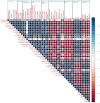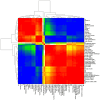Molasses-based waste water irrigation: a friend or foe for carrot (Daucus carota L.) growth, yield and nutritional quality
- PMID: 39266960
- PMCID: PMC11391779
- DOI: 10.1186/s12870-024-05527-1
Molasses-based waste water irrigation: a friend or foe for carrot (Daucus carota L.) growth, yield and nutritional quality
Abstract
Management of molasses-based wastewater generated in yeast and sugar industries is a major environmental concern due to its high chemical oxygen demand and other recalcitrant substances. Several strategies have been used to reduce the inland discharge of wastewater but the results are not satisfactory due to high operating cost. However, reuse of molasses-based wastewater irrigation in agriculture has been a major interest nowadays to reduce the freshwater consumption. Thus, it is crucial to monitor the impacts of molasses-based waste water irrigation on growth, metabolism, yield and nutritional quality of crops for safer consumer's health. In present study, carrot seeds of a local cultivar (T-29) were germinated on filter paper in Petri dishes under controlled conditions. The germinated seeds were then transplanted into pots and irrigated with three different treatments normal water (T0), diluted molasses-based wastewater (T1), and untreated molasses-based wastewater (T2), in six replicates. Results revealed that carrot irrigated with untreated molasses-based waste water had exhibited significant reductions in growth, yield, physiology, metabolism, and nutritional contents. Additionally, accumulation of Cd and Pb contents in carrot roots irrigated with untreated molasses-based waste water exceed the permissible limits suggested by WHO and their consumption may cause health risks. While, diluted molasses-based waste water irrigation positively enhanced the growth, yield of carrot plants without affecting the nutritional quality. This strategy is cost effective, appeared as most appropriate alternative mean to reduce the freshwater consumption in water deficit regions of the world.
Keywords: Carrot cultivation; Waste water remediation; Water scarcity.
© 2024. The Author(s).
Conflict of interest statement
The authors declare no competing interests.
Figures








Similar articles
-
Eco-friendly approach to decrease the harmful effects of untreated wastewater on growth, yield, biochemical constituents, and heavy metal contents of carrot (Daucus carota L.).Environ Sci Pollut Res Int. 2024 Feb;31(9):14043-14058. doi: 10.1007/s11356-024-31869-2. Epub 2024 Jan 25. Environ Sci Pollut Res Int. 2024. PMID: 38273079
-
Increased health risk assessment in different vegetables grown under untreated sewerage irrigation regime due to higher heavy metals accumulation.Environ Sci Pollut Res Int. 2023 Aug;30(36):86189-86201. doi: 10.1007/s11356-023-28413-z. Epub 2023 Jul 4. Environ Sci Pollut Res Int. 2023. PMID: 37402048
-
Heavy metal accumulation in soils and grains, and health risks associated with use of treated municipal wastewater in subsurface drip irrigation.Environ Monit Assess. 2015 Jul;187(7):410. doi: 10.1007/s10661-015-4565-8. Epub 2015 Jun 7. Environ Monit Assess. 2015. PMID: 26050062
-
Pollen-mediated gene flow from wild carrots (Daucus carota L. subsp. carota) affects the production of commercial carrot seeds (Daucus carota L. subsp. sativus) internationally and in New Zealand in the context of climate change: A systematic review.Sci Total Environ. 2024 Jul 10;933:173269. doi: 10.1016/j.scitotenv.2024.173269. Epub 2024 May 14. Sci Total Environ. 2024. PMID: 38754518
-
The Impact of Climate Change on Raw and Untreated Wastewater Use for Agriculture, Especially in Arid Regions: A Review.Foodborne Pathog Dis. 2018 Feb;15(2):61-72. doi: 10.1089/fpd.2017.2389. Foodborne Pathog Dis. 2018. PMID: 29446666 Review.
References
-
- Swain A, Jägerskog A. Emerging security threats in the Middle East: the impact of climate change and globalization. Rowman & Littlefield; 2016. p. 82.
-
- Hussain A, Cao J, Ali S, Muhammad S, Ullah W, Hussain I, Zhou J. Observed trends and variability of seasonal and annual precipitation in Pakistan during 1960–2016. Int J Climatol. 2022;42(16):8313–32.10.1002/joc.7709 - DOI
-
- Javid K, Akram MAN, Ranjha MM, Pervaiz S. GIS-based assessment of aridity over Punjab Province, Pakistan, by using climatic indices. Arab J Geosci. 2020;13:1–12.10.1007/s12517-020-5236-9 - DOI
MeSH terms
Substances
LinkOut - more resources
Full Text Sources

